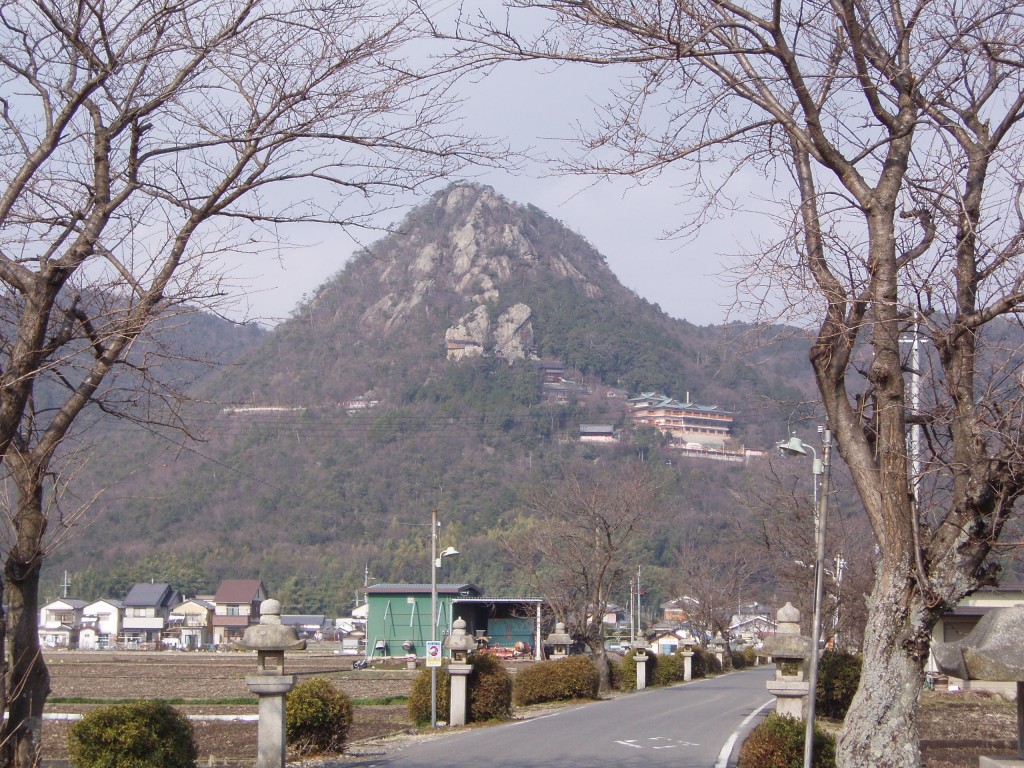
The Akagami hill to which Tarobo-gu clings on the lower slopes
PAGAN’S DELIGHT
For a neo-pagan, Japan is a magical treasure-house of sacred sites and power spots. Many date back to prehistoric times, their origins obscured by a mist thicker even than that of ancient Avalon. There are swords here more sacred than Excalibur, myths more potent than Camelot, a female deity to rival even the great Earth Goddess herself. All this and a primal religion that remains intact, not fabricated. For a seeker of the old ways, Japan is a pagan’s delight indeed.
Such is the plenitude of holy places that somewhere special like Tarobo-gu (aka Taroubou-gu) goes practically unknown. My Japanese friends had never heard of it. Yet this Shiga-ken mountain shrine would surely be high on the list of spiritual centres if it were in any other country. A striking setting; captivating legends; and over 1200 years of spiritual endeavour.
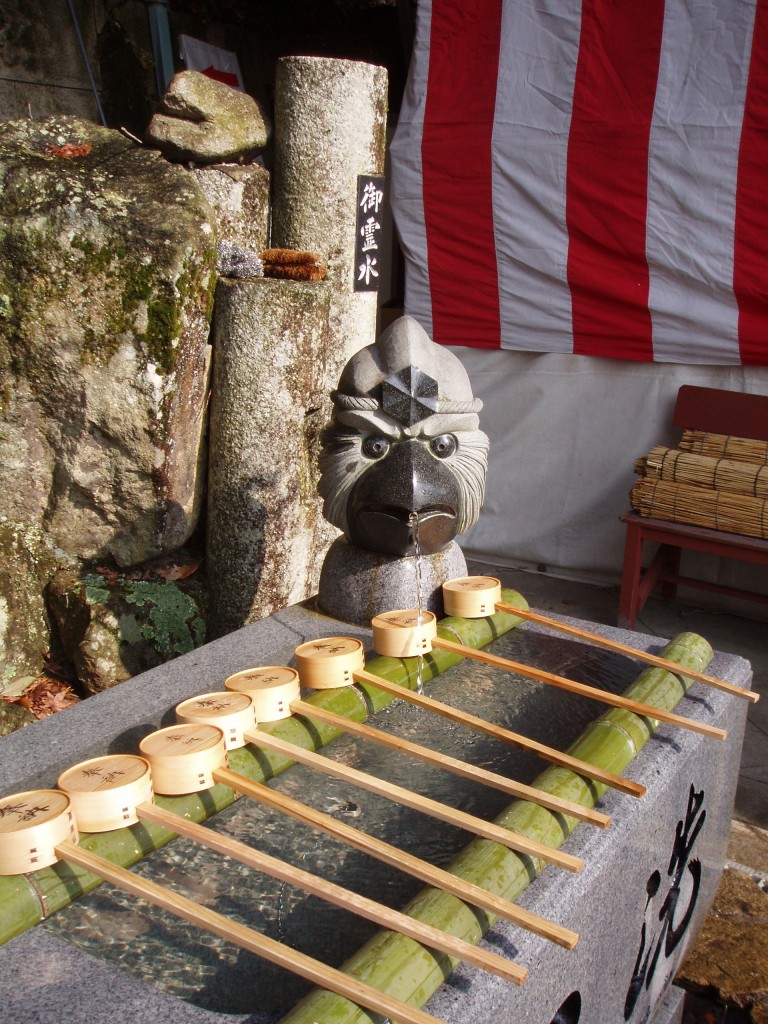
A Tengu water-basin for purification
The mountain, named Akagami, has a distinctive shape, rising out of the valley floor like a miniature Mt Fuji. From the approach road there are 742 steps up to the main shrine. Be prepared for a steep climb. If you’re not up to that, it’s possible to drive up to the main complex, but then of course you won’t earn any merit. Besides, it’s rather wonderful to arrive at an unmanned railway station in the middle of nowhere with not a coffee shop or convenience store in sight. Just a road that beckons to a sacred hill.
Mountain asceticism
Akagami has been a place of worship since before the seventh century, when the Buddhist Prince Shotoku visited it. In recognition of its spiritual power he established a temple for the protection of the realm. Later on Saicho, founder of the Tendai sect, came to pray and started a hermitage for his followers.
From the outset Tendai has revered local kami, and for centuries the mountain hosted a Shinto-Buddhist complex. It also served as a centre for shugendo (mountain asceticism). The name of the shrine, Tarobo, refers to a tengu king. A mythical creature with shamanistic overtones, the tengu dwell in the mountains and are linked to mountain asceticism and martial arts.
The Tarobo tengu is supposedly the elder brother of the Kurama tengu, under which the twelfth-century hero Yoshitsune trained. The young boy was an apprentice at the Tendai temple near Kyoto, and when he escaped to join his brother Yoritomo he made for the Akagami complex. The rock where he rested is now a shrine to his memory.
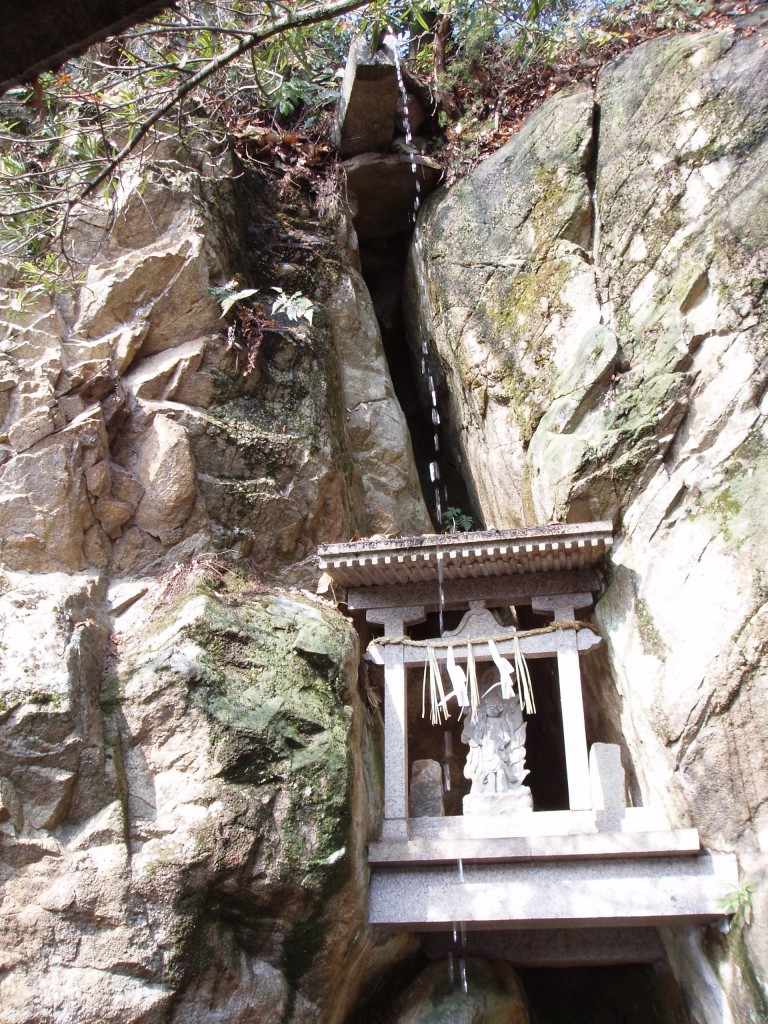
Cold waterfall for ascetic rites
Evidence of the shugendo connection is everywhere apparent at the shrine. Water basins intended for cold water austerities. Ropes dangling from death-defying cliffs. And a meditative walk along the rock face presided over by a statue of the shugendo founder, the legendary En no Gyoja (fl.660).
Syncretism
For centuries the temple-shrine complex on Akagami remained a thriving exemplar of Japanese syncretism. But after the coming to power of the Meiji government in 1868, religious institutions were forced to choose between Shinto and Buddhism by authorities keen to impose a state religion. Many believe this to be an artificial division, and that Shinto-Buddhism represents Japan’s natural mindset. It certainly seems that way on Tarobo, since the shrine precincts are home to several examples of Buddhist statuary.
The main kami is a son of Amaterasu. His name is not widely known,unsurprisingly since it’s Masaka-Akatsukachi-Hayahiameno-Oshi-Homimi-no-Mikoto. In Japanese mythology he was a heavenly warrior offered the chance by his mother to ‘descend to earth’ but he demurred in favour of his son Ninigi. According to the shrine, he has the attributes of the sun, rising every morning without fail to conquer darkness. As such he’s a kami of victory, whether it be in business, exams, martial arts or any other field of life. Prayers should be directed to that end.
The shrine’s main feature is a massive ‘husband and wife’ rock that according to legend was cleaved in half by the sword of a mighty kami. A narrow path leads between the two sheer rock faces, and if you’re pure of heart you can pass straight through. Liars, however, will be wedged in half-way. It’s a test of the ‘makoto’ (sincerity) that lies at the heart of Shinto – and some would say Japanese culture as a whole.
Intriguing pathways lead off from the main building, and there are more sacred rocks at the top of the mountain. There are also fine views on a clear day. There’s a small Dream Shrine too where, if you write a wish on a white stone, your dream will come true. Magical, you might say.
The highlight of the year is a fire festival on the first Sunday of December. This is one of the biggest events in the shugendo calendar, attended by some three hundred yamabushi (mountain ascetics). Thousands of wooden tablets are sent up in billowing smoke to waft the prayers of the faithful to heaven. Afterwards there is fire-walking, with onlookers too invited to join in. A midwinter fire with conch-horns; nature worshippers in deerskin; sacred rites and ancient spells. It’s a spectacle that will surely warm the heart of any pagan!
______________________
Directions: From Kyoto or Osaka, take the ‘shinkaisoku’ to Omihachiman, then a local train for 15 mins to Tarobo station. From there it’s a ten minute walk to the shrine steps. Tel. 0748 23-1341.
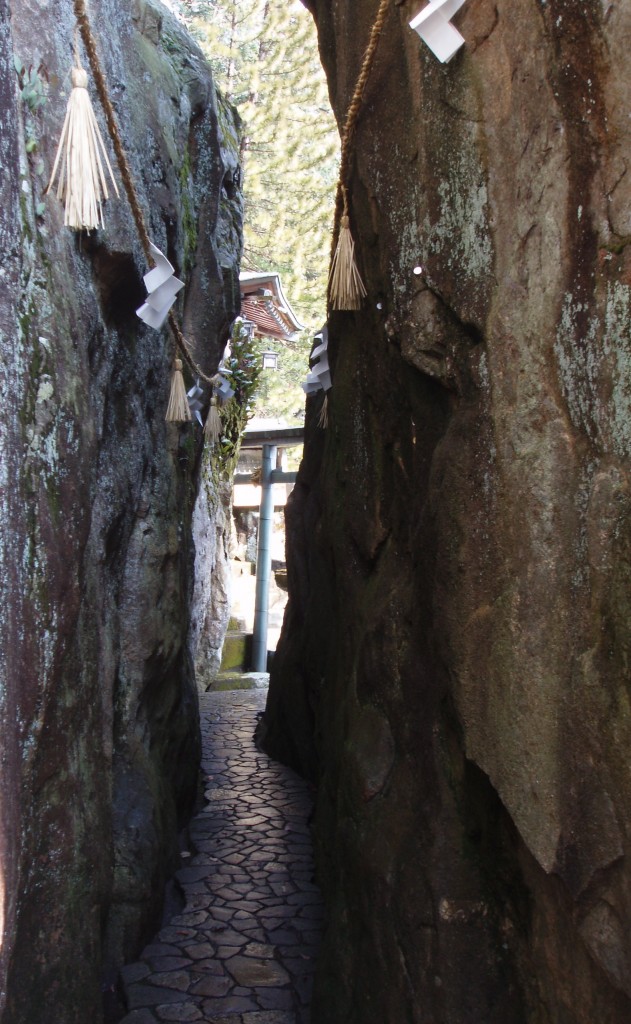
Passing between the sacred rocks is supposed to bring good luck - an obvious incentive by the kami to diet.
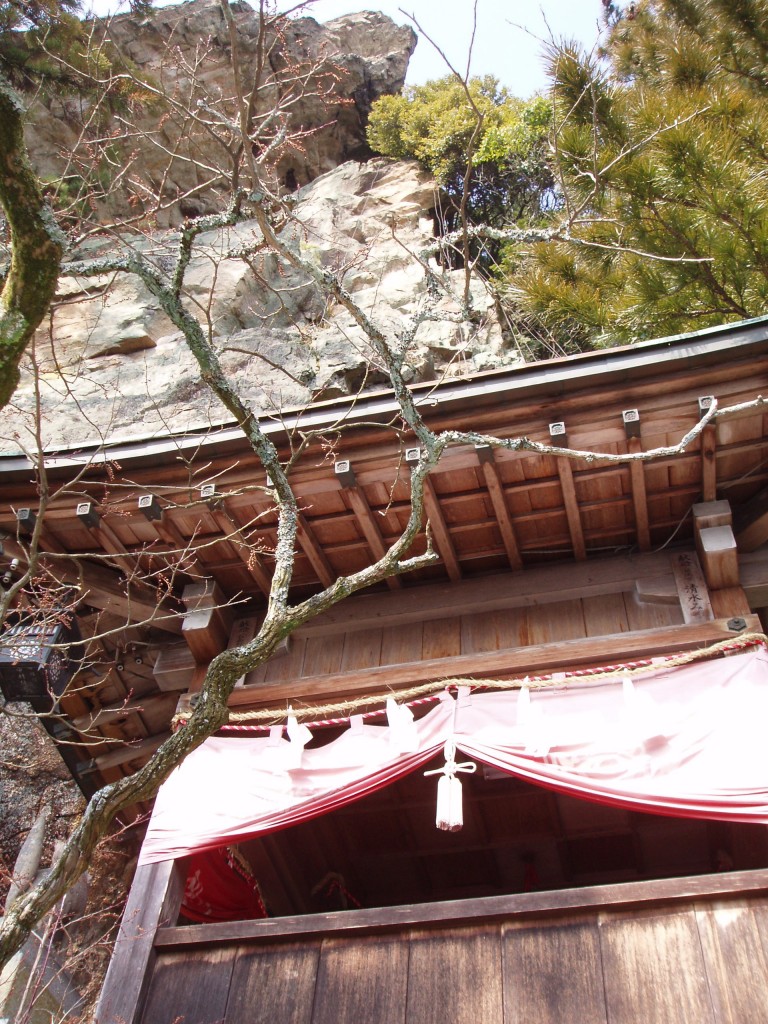
Some of the steps are steep, and some of the buildings improbably built into the rockside
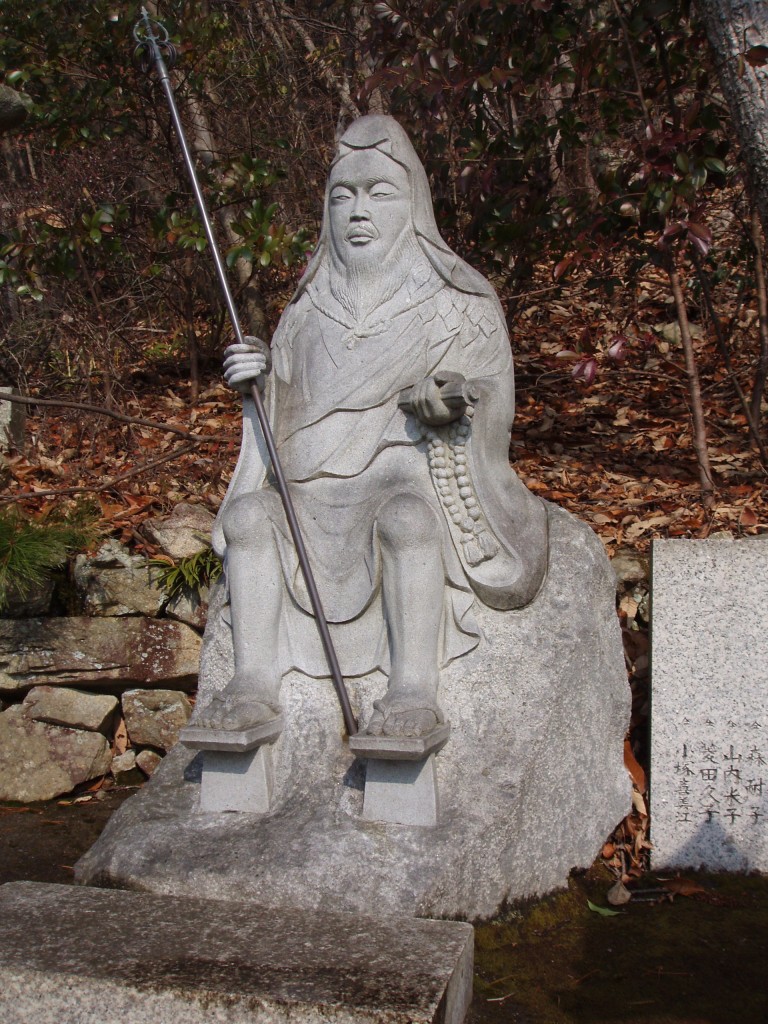
En no Gyoja, legendary founder of Shugendo mountain asceticism
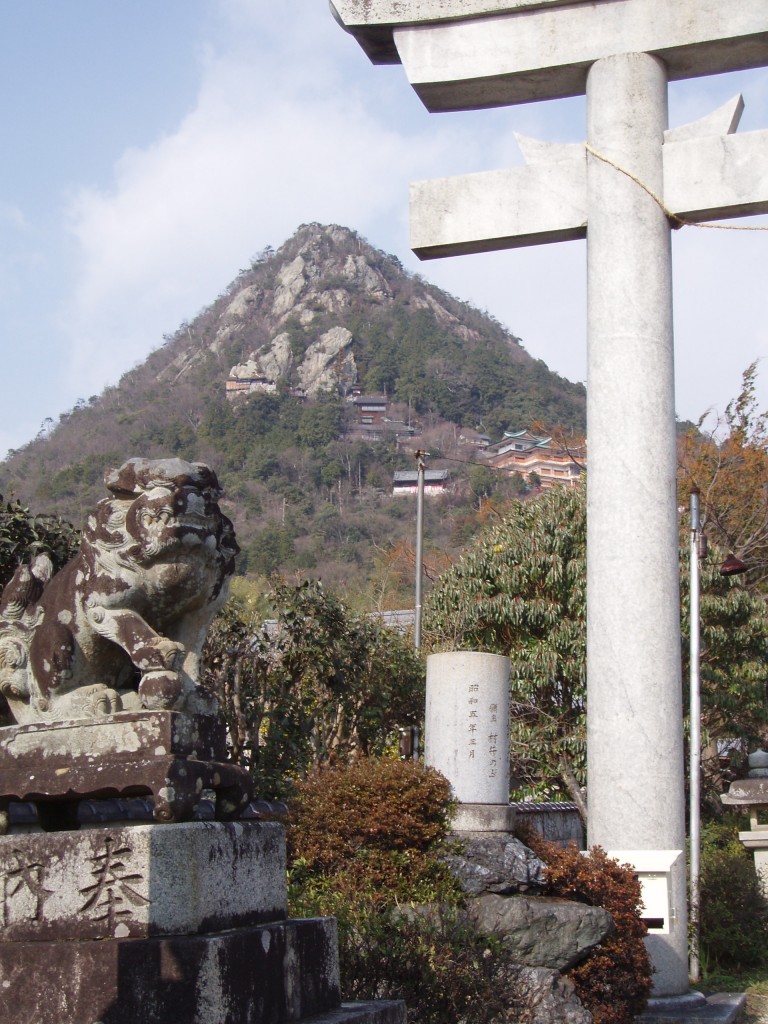
Entrance way to a shrine on a magical rock

Looks intriguing John. If we followed your instructions to get to the shrine is there any chance we might find ourselves ending up somewhere else?! My main question would be whether there was only one local train from Omihachiman you can catch. We’ve had some interesting experiences in Japan on the local train/bus network so any further pointers would be appreciated!
Hello, Jann. I always feel that getting lost in Japan is part of the experience! However, if you want to check trains, use the very user-friendly Hyperdia website where you can check on trains to Tarobogumae. For example, there’s a train leaving Kyoto at 7.10, change at Omihachiman, depart at 8.06 and arrive 14 minutes later at 8.20. One hour 10 mins in all, and you have 13 minutes at Omihachiman to find the right train! (There’s probably no others anyway.)
Thanks John! Much appreciated. I agree that the journey, however indirect, is part of the experience. Sometimes time and timing can be of the essence though.